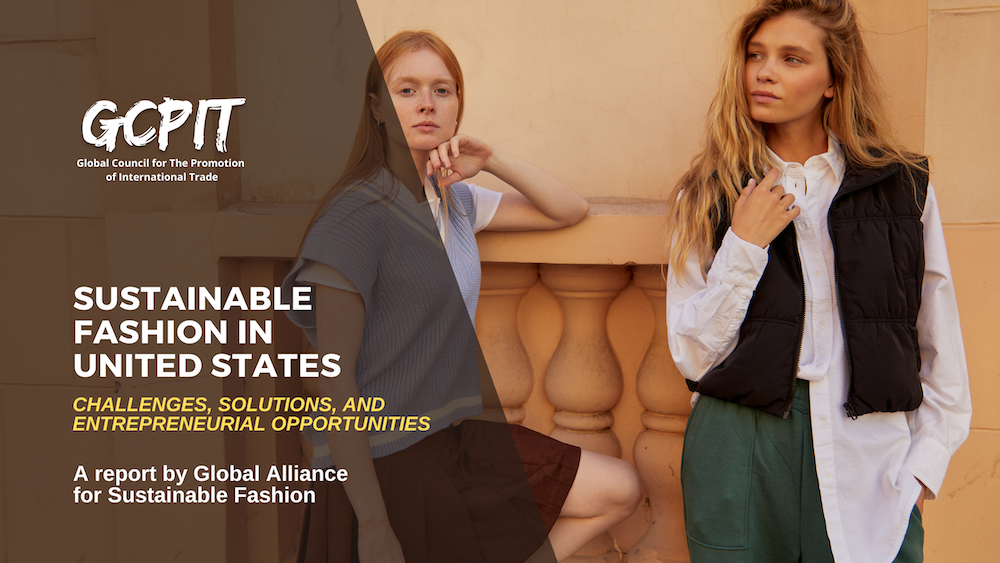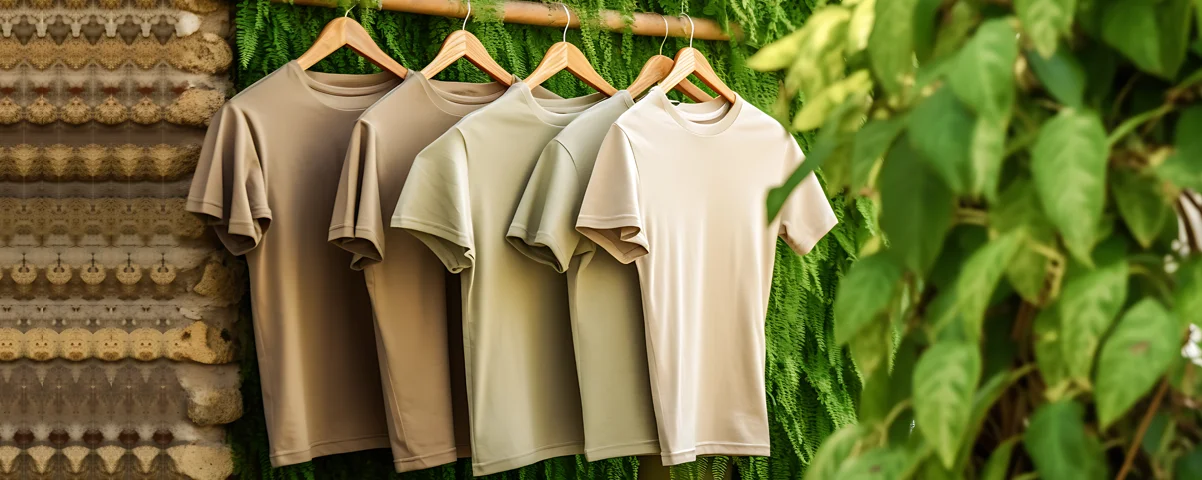Cape Town Sustainable Fashion: Honest Garments for a Better Earth
Cape Town Sustainable Fashion: Honest Garments for a Better Earth
Blog Article
Remain Ahead of the Curve by Exploring Ingenious Fashion Fads
In a market as vibrant as style, remaining in advance entails even more than just adhering to existing fads-- it demands an expedition of advancement. The convergence of innovation and style declares a brand-new era of consumer engagement.

Accepting Smart Textiles
Over the last few years, the fashion market has actually observed a transformative change with the assimilation of clever fabrics, a cutting-edge technology that mixes technology with fabric. This advancement stands for not just a fusion of looks and functionality however likewise a considerable jump in the direction of sustainability and customization in vogue. Smart textiles, likewise referred to as e-textiles, installed sophisticated electronic devices such as sensors and conductive threads within the fabric, enabling garments to interact with the environment or the user.
These textiles are developed to keep an eye on physiological specifications, such as heart price or body temperature level, supplying real-time health and wellness analytics. Beyond health and wellness applications, wise textiles are also being used for adaptive clothing, which can change shade or pattern in reaction to environmental stimulations, hence offering a vibrant style experience.
Additionally, the development of energy-harvesting textiles that generate power from activity or sunlight is leading the means for self-dependent wearable innovation. This development is interesting eco conscious customers and designers intending to decrease the ecological footprint of style. As research and development in this area development, clever textiles are anticipated to become increasingly prevalent, improving the landscape of modern fashion with their multifunctional capabilities.
The Increase of 3D Printing
Transforming the production landscape, 3D printing has become a game-changer in the fashion business. This cutting-edge modern technology has allowed designers to press the borders of creativity, producing elaborate and personalized garments that were previously unbelievable. By leveraging digital style and additive production, 3D printing assists in the development of complex geometries and patterns, permitting developers to trying out new appearances and structures.
A notable benefit of 3D printing in fashion is its capacity to produce on-demand, reducing waste and decreasing supply demands. This effectiveness not just optimizes production processes yet also permits fast prototyping, making it possible for developers to bring their visions to life in a much shorter duration. Moreover, 3D printing supports modification to a degree unrivaled by traditional methods, using tailored fits and one-of-a-kind styles tailored to private consumer preferences.
The surge of 3D printing has likewise equalized style, making it easily accessible to arising developers that can currently produce high-quality pieces without substantial economic investment in conventional manufacturing infrastructure. As technology remains to breakthrough, the fashion business is positioned to harness the complete potential of 3D printing, exploring new materials and techniques that will most certainly redefine exactly how fashion is developed and generated.
Lasting Fashion Advancements
As the apparel industry faces the pushing need for ecological obligation, sustainable style technologies have actually arised at the leading edge of transformative change. The expanding recognition of environmental effect has actually fueled a change in the direction of more eco-conscious methods and products. Designers and brands are currently prioritizing sustainability, incorporating approaches that decrease waste and reduce carbon impacts.
One considerable development is the rise of round fashion, which emphasizes recycling and upcycling to prolong the lifecycle of garments. This method not just lowers waste however also motivates consumers to adopt an extra mindful strategy to garments usage. Additionally, the usage of sustainable products, such as organic cotton, hemp, and recycled polyester, has gotten traction. These products require much less water and energy throughout production, significantly reducing ecological impact.
An additional innovation depends on the adoption of cutting-edge dyeing strategies that use waterless processes or all-natural dyes, thus decreasing the substantial amounts of water and chemicals typically made use of in textile dyeing. Furthermore, improvements in biotechnology have resulted in the development of lab-grown leather and fabrics, providing cruelty-free and eco-friendly options to conventional products. With these pioneering initiatives, the garment industry is making purposeful strides in the direction of a much more lasting future.

Tech-Integrated Garments
Tech-integrated apparel represents a revolutionary fusion of fashion and technology, reshaping how individuals communicate with their garments. This innovative domain is marked by the inclusion of clever fabrics and embedded electronic elements, improving both functionality and visual charm. From fitness trackers embedded in sportswear to heated jackets managed using mobile phone applications, tech-integrated apparel supplies consumers unprecedented ease and flexibility.
Pioneering brands are driving this pattern, concentrating on producing garments that react to environmental stimuli or user commands. As an example, some garments can change shade or pattern in reaction to temperature level changes, while others integrate biometric sensing units to keep track of health metrics like heart price or stress degrees. The smooth assimilation of technology right into fabrics additionally encompasses environmental sustainability, with efforts to establish self-cleaning textiles or garments that her response adapt to climate condition, therefore decreasing the need for numerous layers.
In addition, the advent of wearable technology is not just limited to clothes yet reaches devices like watches weblink and eyeglasses, further broadening the range of tech-integrated fashion. As the industry continues to introduce, the capacity for customization and personalization in apparel grows, offering customers unique, tech-enhanced fashion experiences that satisfy their individual requirements and choices.
Future of Virtual Fashion
In the last few years, the future of digital style has become a transformative pressure within the market, leveraging innovations in electronic innovation to redefine exactly how fashion is created, experienced, and eaten. By integrating enhanced reality (AR), digital reality (VIRTUAL REALITY), and 3D layout tools, designers can currently craft interactive and immersive experiences that go beyond conventional style limits. Online fashion allows for the production of garments that exist only in digital environments, supplying endless opportunities for advancement without the constraints of physical production.
This digital change not only provides opportunities for creative expression however likewise addresses sustainability worries intrinsic in conventional style practices. Cape Town Sustainable Fashion. By getting rid of the requirement for physical resources, virtual style minimizes waste and decreases carbon footprints. Additionally, the surge of virtual style aligns with the increasing consumer need for customized and distinct experiences, as virtual garments can be personalized and customized to private preferences with ease

Final Thought
The style market's future lies in the combination of cutting-edge innovations and lasting practices. Online fashion is poised to redefine customer communications.
In current years, the style sector has seen a transformative shift with the integration of wise textiles, a sophisticated innovation that mixes innovation with textile.As the fashion More Help sector grapples with the pressing demand for environmental obligation, sustainable style innovations have actually emerged at the leading edge of transformative modification.In current years, the future of online style has actually arised as a transformative force within the industry, leveraging innovations in electronic modern technology to redefine how fashion is produced, experienced, and consumed. The increase of virtual style lines up with the raising customer demand for special and personalized experiences, as online garments can be tailored and tailored to private choices with ease.
The fashion sector's future lies in the assimilation of lasting methods and innovative modern technologies.
Report this page